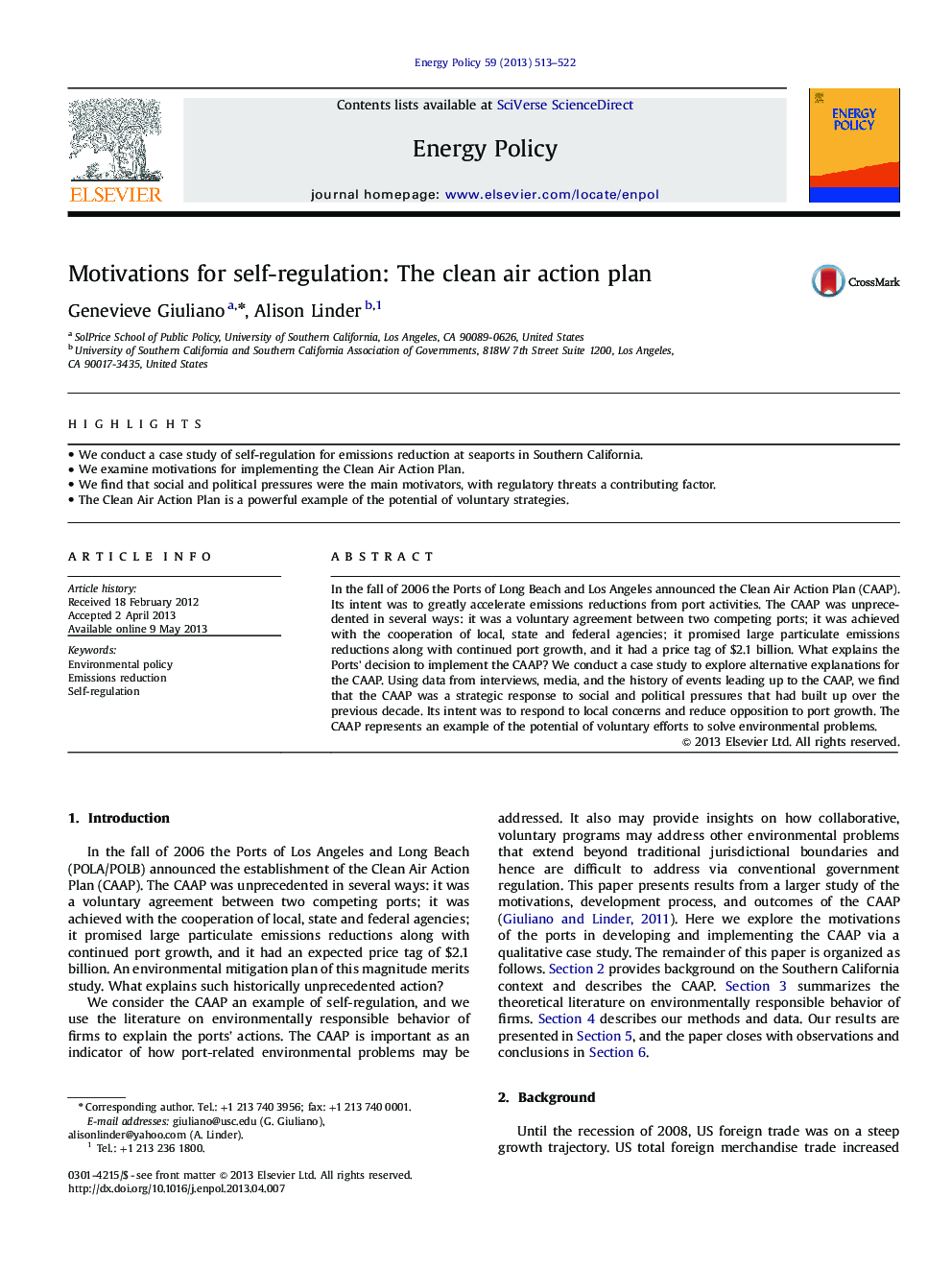| Article ID | Journal | Published Year | Pages | File Type |
|---|---|---|---|---|
| 7404523 | Energy Policy | 2013 | 10 Pages |
Abstract
In the fall of 2006 the Ports of Long Beach and Los Angeles announced the Clean Air Action Plan (CAAP). Its intent was to greatly accelerate emissions reductions from port activities. The CAAP was unprecedented in several ways: it was a voluntary agreement between two competing ports; it was achieved with the cooperation of local, state and federal agencies; it promised large particulate emissions reductions along with continued port growth, and it had a price tag of $2.1 billion. What explains the Ports' decision to implement the CAAP? We conduct a case study to explore alternative explanations for the CAAP. Using data from interviews, media, and the history of events leading up to the CAAP, we find that the CAAP was a strategic response to social and political pressures that had built up over the previous decade. Its intent was to respond to local concerns and reduce opposition to port growth. The CAAP represents an example of the potential of voluntary efforts to solve environmental problems.
Related Topics
Physical Sciences and Engineering
Energy
Energy Engineering and Power Technology
Authors
Genevieve Giuliano, Alison Linder,
